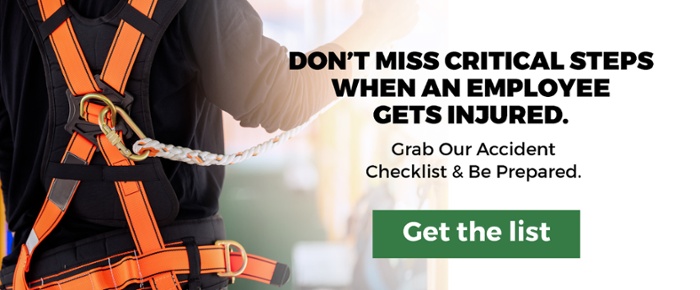The construction industry, known for its high-risk environments, demands robust safety measures to protect its workforce. Accidents and near misses still occur despite rigorous safety protocols, highlighting the need for effective corrective action plans (CAPs). Implementing a CAP in construction is not just about compliance but ensuring a safer workplace.
This article will explore how to implement a CAP for construction safety, ensuring that your site complies with regulations and is a paragon of safety in the industry.
Understanding Corrective Action Plans
A corrective action plan is a structured approach to identifying, analyzing, and addressing gaps in safety protocols, particularly after an incident or a near miss. These plans are not merely reactionary measures; they are proactive blueprints designed to prevent the recurrence of similar safety issues in the future.
In the construction industry, where risks are inherent, and the stakes are high, understanding and effectively implementing CAPs can be the difference between a safe worksite and a hazardous one. This section will delve into what makes a CAP essential, its key components, and how it fits into the more extensive safety management system in construction, setting the stage for a step-by-step guide on creating and executing a successful corrective action plan.
Step 1: Incident Identification and Reporting
The first critical step in implementing a corrective action plan for construction safety is the prompt and accurate identification and reporting of incidents. This stage involves recognizing any occurrence that deviates from standard safety procedures or results in an unsafe condition, near miss, or accident on the construction site. All construction workers and supervisors must be trained to identify and understand what constitutes a safety incident and the immediacy with which it needs to be reported.
Reporting should be made accessible and straightforward, ensuring no barriers to communication. This can include incident forms, digital reporting tools, or direct communication channels to safety officers. Timely reporting not only aids in addressing the specific incident quickly but contributes to an overall culture of safety awareness and responsibility.
Accurate identification and comprehensive reporting lay the foundation for analyzing the root cause and developing effective corrective measures to prevent future occurrences.
Step 2: Conducting a Thorough Investigation
Once an incident is reported, a thorough investigation must follow. This step is vital to understand what happened and why. It involves collecting data, interviewing witnesses, and examining the incident site. The goal is to identify the root cause, not to assign blame. Common tools used in this process include the "Five Whys" technique and cause-and-effect diagrams.
Step 3: Develop the Corrective Action Plan
Once an incident has been identified and reported, the next vital step is conducting a thorough investigation. This process is pivotal in understanding the incident's root cause, which is essential for implementing effective corrective actions. The investigation should be systematic and unbiased, often involving a team that includes safety officers, site supervisors, and possibly third-party experts, depending on the incident's severity.
During the investigation, gathering comprehensive information, including interviewing witnesses, examining the incident site, and reviewing any relevant documentation or CCTV footage, is crucial. The objective here is not to assign blame but to gain a clear and factual understanding of what occurred, why it happened, and how similar incidents can be prevented in the future. A detailed and systematic investigation sets the stage for developing targeted corrective actions that address specific safety lapses, enhancing the overall safety culture in the construction environment.
Step 4: Implement The Plan
Implementing the CAP is where the rubber meets the road. It requires coordination and commitment from all levels of the organization. The plan should be communicated clearly to everyone involved. Necessary resources, whether it's training, equipment, or personnel, must be allocated to ensure the plan's success. Regular progress meetings help keep the implementation on track.
Step 5: Training and Education
A crucial part of implementing any CAP is training and education. Employees must be trained on new procedures, equipment, or safety protocols the CAP introduces. This training should not be a one-time event but an ongoing process, reinforcing the importance of safety and ensuring that all employees are up-to-date with the latest practices.
Step 6: Monitoring and Review
The effectiveness of the CAP should be monitored continuously. This involves tracking the implementation of actions and evaluating their impact on safety. Key performance indicators (KPIs) such as the number of incidents, near misses, and employee safety feedback can be valuable metrics. Regular reviews of the CAP ensure that it remains relevant and effective over time.
Step 7: Continuous Improvement
Lastly, the CAP should be a living document, open to revisions and improvements. The construction industry is dynamic, with new technologies, materials, and methods constantly emerging. The CAP must evolve to reflect these changes and incorporate lessons learned from its implementation.
Related Content: How to Build a Construction Incident Report
Conclusion
Implementing a corrective action plan for construction safety is a complex but vital process. It's about creating a safer work environment where risks are minimized and employees feel valued and protected. By following these steps and fostering a culture of safety and continuous improvement, construction companies can comply with regulations and set new standards for workplace safety.
Remember, a successful CAP is not just about reacting to incidents but proactively working to prevent them. It requires commitment, resources, and, most importantly, a shared belief in the value of every worker’s life and well-being. By implementing a robust CAP, construction companies can demonstrate their commitment to safety, enhance their reputation, and ensure the long-term success of their business.


















